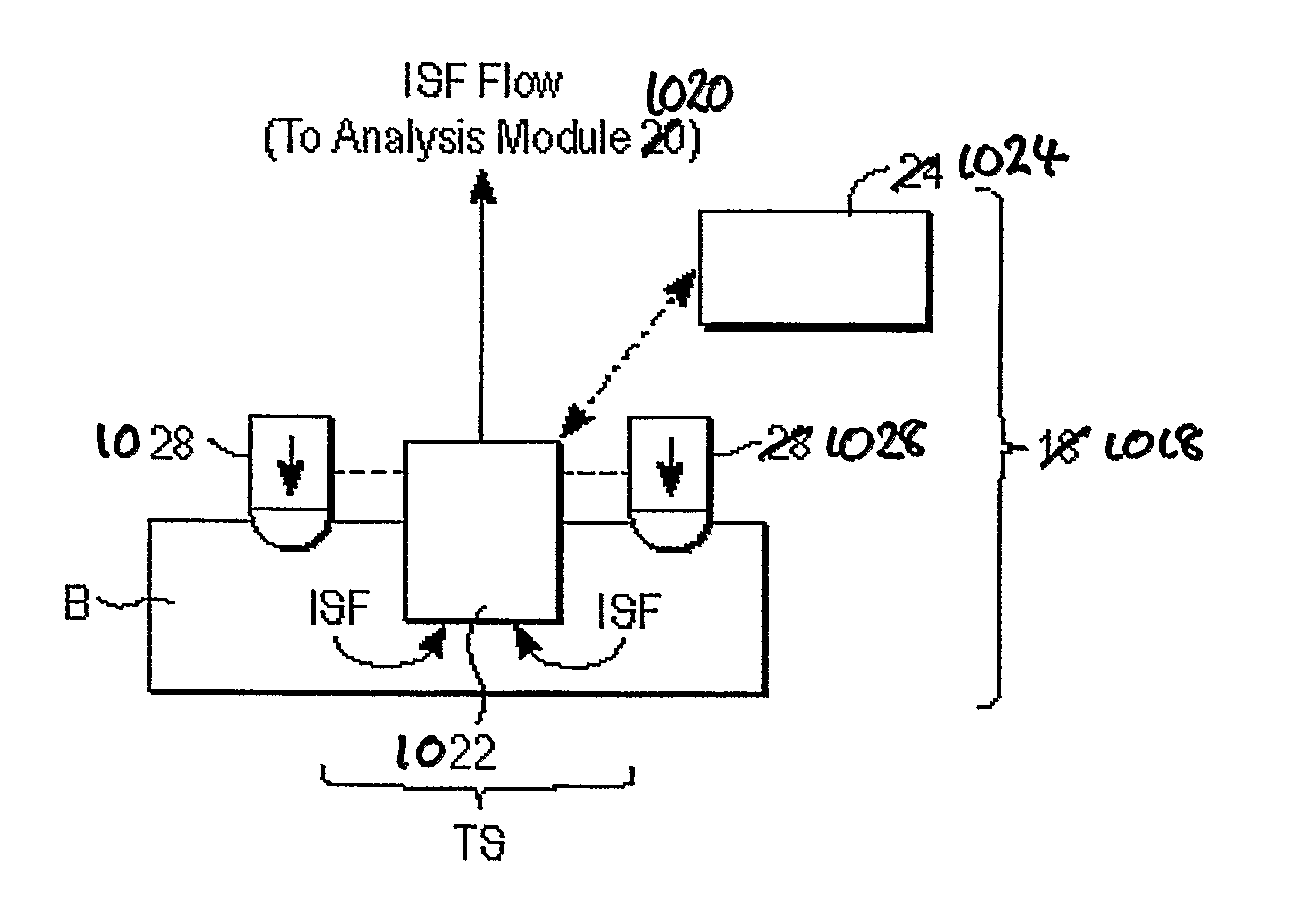Wearable Sensor Device and System
a sensor and wearable technology, applied in the field of continuous sensors, can solve the problems of limb amputation and blindness, enter a comatose state, and serious healthcare complications
- Summary
- Abstract
- Description
- Claims
- Application Information
AI Technical Summary
Benefits of technology
Problems solved by technology
Method used
Image
Examples
Embodiment Construction
[0054]FIG. 1 shows a test element strip or test strip 2 having a sample area 4, electrical tracks 6, and a Radio Frequency Identification (RFID) tag 10. RFID (Radio Frequency Identification) is a technique which is able to carry data in suitable transponders, generally known as tags, and to retrieve data, by machine-readable means, at a suitable time and place to satisfy particular application needs.
[0055] An example RFID system may have, in addition to at least one tag, a transceiver or means of reading or interrogating the tags and optionally means of communicating the data received from a tag to an information management system. Transceivers are also known as interrogators, readers, or polling devices. Typically the system may also have a facility for entering or programming data into the tags. RFID tags contain an antenna and an integrated circuit. Various configurations of RFID tags are currently available in the marketplace and one such supplier is Texas Instruments® and the ...
PUM
 Login to View More
Login to View More Abstract
Description
Claims
Application Information
 Login to View More
Login to View More - R&D
- Intellectual Property
- Life Sciences
- Materials
- Tech Scout
- Unparalleled Data Quality
- Higher Quality Content
- 60% Fewer Hallucinations
Browse by: Latest US Patents, China's latest patents, Technical Efficacy Thesaurus, Application Domain, Technology Topic, Popular Technical Reports.
© 2025 PatSnap. All rights reserved.Legal|Privacy policy|Modern Slavery Act Transparency Statement|Sitemap|About US| Contact US: help@patsnap.com



